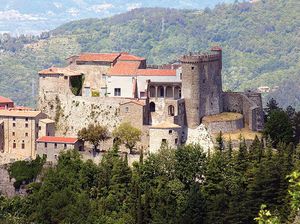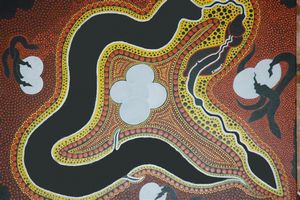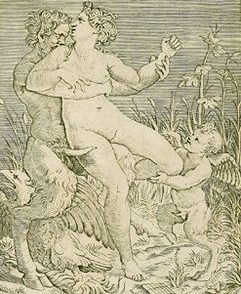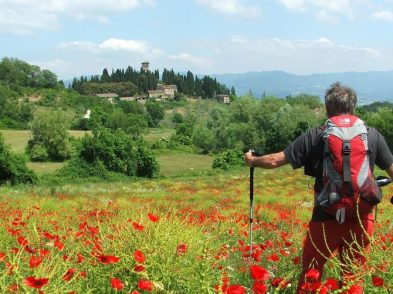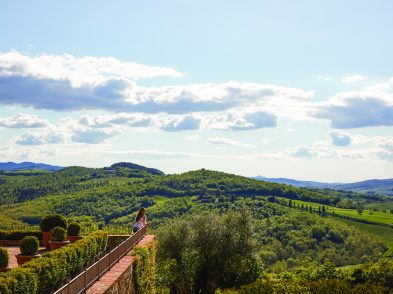When Enrico Caruso sang Andrea Chenier from the windows of Bellosguardo, he looked out on the blue Tuscan sky and the green hills of Lastra a Signa. The famous tenor bought the villa in 1906 because of the peacefulness of the area and because the dry air would be good for his voice. Now, after 100 years of various changes in ownership, the villa will become a museum dedicated to Caruso thanks to the efforts of various players: the Municipality of Lastra a Signa, the local Villa Caruso Association and the Caruso Association of Milan.‘In 1979, all the furnishings in the villa were auctioned off and all of the tenor’s belongings were dispersed,’ says Giampiero Fossi, director of Polo Museale Caruso. ‘We restored the building and preserved the surrounding park; both have been open to hosting pub-lic events since 1995. Now, this donation from the Caruso Association of Milan will give Bellosguardo the complete collection of Ca-ruso records along with original pieces of furniture, paintings, sculptures and the written documents testifying the singer’s relation-ship with the world of opera and the protagonists of his time.’ Villa Caruso is a lyrical crown to the former country residence of Laudomia Guicciardini, and is surrounded by a huge park dotted with valuable ancient statues. The estate, which presides over many hectares of agricultural land, was inherited in 1541, by Laudomia’s son, abbot Alessandro Pucci who commissioned the architects Dosio and Tribolo to make the villa and park a place of delight for body and soul. The garden still has its 16th-century layout, with geometrical edges enriched by lemon trees in terracotta vases and an elegant fountain. The park hosts lush flora and secular trees that shadow several mythological statues; the oldest ones represent animals, like the abbot’s stone ‘bestiary.’ The abbot strived to fill the park with domestic and wild animals according to the ideal pax naturae of Eden. Inside the park, visitors can chose between two trails: either the historical-artistic or the botanical path. One can discover the Po-ets’ Square, guarded by statues of Venus, Eros, Bacchus, Bacchante, Pan and Satyr: verses from Horace’s Odes are carved on the pedes-tal, inviting the visitor to rest and listen to the enchantment of ancient poetry. Next there’s the Belvedere, the Caruso Terrace, the Circu-lar Lawn, the Bandusian Pond—a Baroque pool dominated by a River God. At Triton Square one finds an elegant fountain by An-dreozzi and Franchi, the Neptune Ramp commissioned by Caruso, Tiger Avenue, flanked by valuable statues of wild animals, the Lion Walk, presided over by mighty stone lions which introduce the hunting theme. Every corner of the garden hosts panoramic scenery, enriched by the great variety of plants and flowers, due to both its original lay-out and landscape changes made over the last century. Non-indigenous species were planted in the garden during the early 20th century by Giuseppe De Micheli, a businessman with a soft spot for art and botany, who created a tropical area in the garden. An historical ar-chive of fruits and flowers of Florence was established in the villa, and a winter garden was planted at the chapel entrance overlooking the Italian garden. One can also visit the museum of old viticulture tools located in the farmhouse, the big storage building linked to the mansion by a loggia with a panoramic terrace. This structure was added by Caruso to create jobs for the locals when the crisis of the straw industry threatened the economic survival of Signa and its surroundings. Built by architect Sabatini, this imposing gallery makes a grand entrance to the parterre with its big arch surmounted by a continuous tympanum. At its centre there’s a clock with the Caruso coat of arms, later replaced by that of De Michelis, who otherwise refrained from alterations inside the house in efforts to keep the tenor’s memory. Other renovations were made by the villa’s subsequent owners, among them the Gucci family, who intended to make Bellosguardo a fashion-promoting centre. The result is an elegantly sober interior with an imposing staircase leading to the upper floor. It’s now ready for the return of the items which belonged to Caruso, especially those pertaining to the panoramic hall where the tenor used to sing while gazing at the countryside. It certainly does offer a ‘Bellosguardo,’ where one can treasure memories of the famous artist; thanks to the opening of the museum, the villa will echo once again and truly become abbot Pucci’s locus amenus, or ‘place of delight.’
LIGHT MODE
DARK MODE
Most popular
The Florentine

